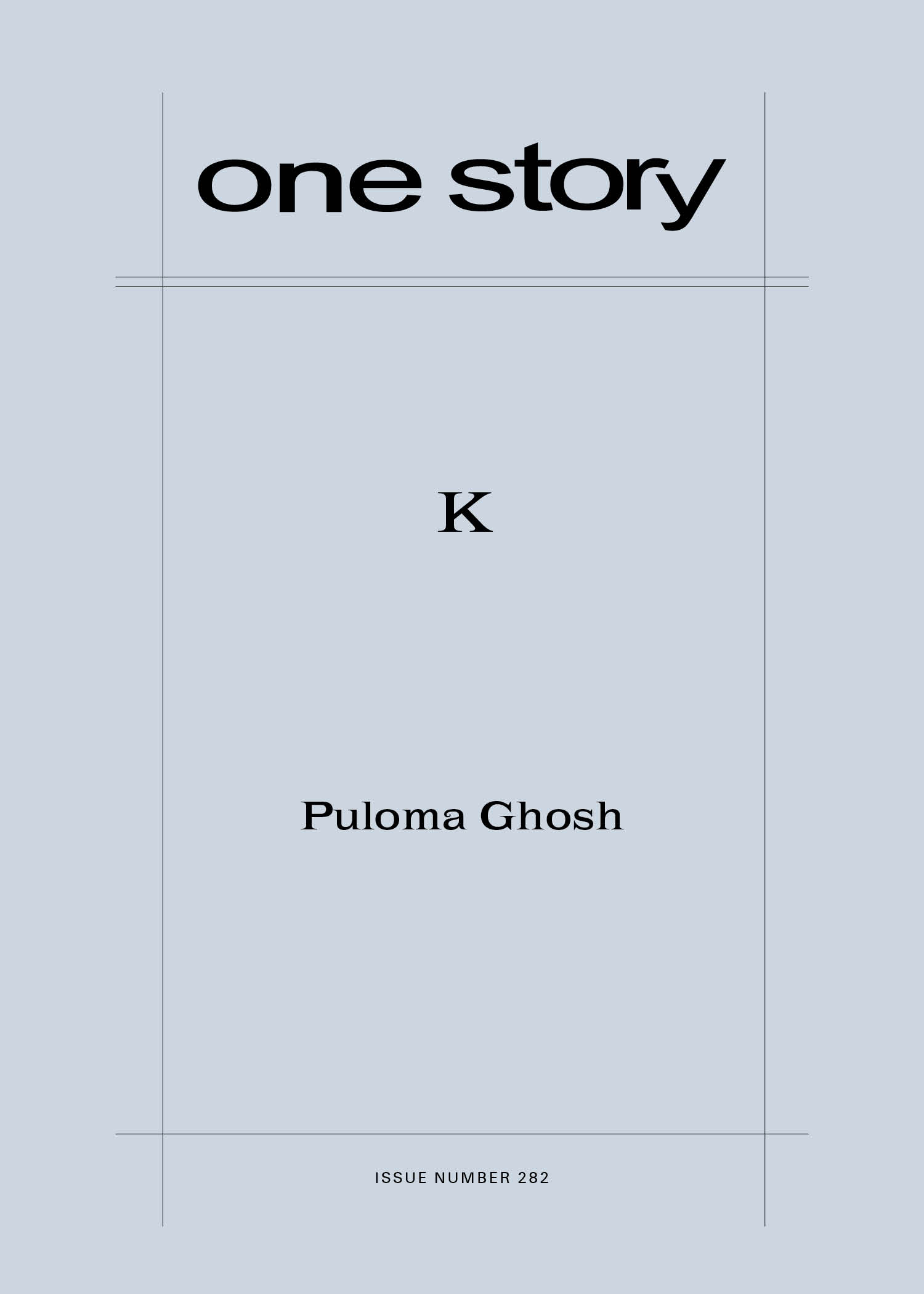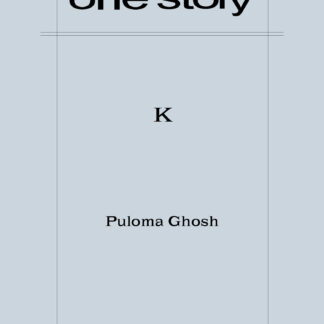
K
$2.50
34 in stock
Excerpt
K appears as always, around midnight, a silhouette on my ex-roommate’s stripped bed. Outside the window is chewable black, broken only by the pinprick of the groundskeeper’s porch light. The rest of my room is still: two wardrobes at the foot of my bed, a thick line between the doors of the one that won’t shut; two desks, one cluttered, one bare; the padlocked maintenance hatch on the ceiling. I know it’s snowing because of the silence.
“Good night, K,” I say, hoping it will make her disappear, but she remains there, sitting upright until my eyes close. She visits my dreams as a full-fleshed girl. She crawls into my bed and wraps her arms around me. Her face is round and dewy, doe eyes under overgrown bangs. “Isn’t it better to sleep this way?” she asks, resting her head on my chest.
“Yes,” I say, holding her close. It feels like she belongs only to me, like a lover or a child, even though the whole campus takes ownership of her, our K, our ghost.
Puloma Ghosh
Puloma Ghosh is a fiction writer living in Chicago, IL. Her work has appeared in CRAFT as a 2020 Flash Fiction Contest Winner, among other publications. She is a 2021 Tin House Summer Workshop Scholar and received her MFA from Bennington College, where she was the spring 2020 Residential Teaching Fellow.
Manuel Gonzales on “K”
One Story is extremely pleased to bring you the creepy, unsettling debut story by the über-talented Puloma Ghosh. A perfect read for fall and the oncoming mood of winter, “K” (set on a small, snow-covered, unnamed liberal arts campus in the northeast), features a young woman, Kara, who finds herself sharing a dorm room with the ghost of a student who disappeared from the same campus some winters ago.
A self-proclaimed liar, an outsider, an orphan, Kara soon realizes that her only true connection might be to the ghostly specter of K who leaves her imprint on the otherwise empty twin bed once occupied by Kara’s roommate. So it should be no surprise that Kara hunts the campus and interrogates her classmates for more information about who K had been, what might have happened to her.
Blending gorgeous prose with a chilling and unsettling sensibility, Ghosh creates an eerie and magical story perfect for the season. We’re happy to welcome you into the stunning mystery of “K.”
Q&A by Manuel Gonzales
- MG: Where did the idea for this story come from?
- PG: I often have terrible, vivid nightmares that can sometimes be fodder for stories. During one of my MFA residencies in Vermont, I was assigned a double dorm room to myself, and had a recurring dream that a shadowy someone sat on the stripped bed on the other side of the room, watching me. After spending one night lying awake with all the lights on and one night on the common room couch, I requested a different dorm room. Bennington, VT is a town full of hauntings and local legends. I couldn’t stop thinking about that dream and how we internalize stories and materialize them into our own personal nightmares.
- MG: What kind of a liar were you when you were younger?
- PG: A really terrible one. It’s a bit of a joke in my family, how bad I was and still am at passing a convincing lie. But I had a close friend growing up who was a compulsive liar, and she always told the best stories. Even when I learned not to take anything she said at face value, it was exciting to not know which parts were true and which were made up.
- MG: How do ghosts and long-taloned creatures and oversized pelt-nests feature in your work in general? Do you find yourself gravitating, as a writer, to the uncanny and monstrous?
- PG: I’ve always loved horror, the supernatural, and the uncanny—they thrill and discomfort in the best way. Nearly everything I write contains a monster of some kind. I enjoy manifesting the terrible things my characters experience internally as real and terrible creatures. But I always hope that the most frightening aspect of the story is not the teeth and claws but something more unsettling underneath.
- MG: Who are the writers you turn to when you find yourself, as a writer, lost or stuck?
- PG: The writers that inspire me most change all the time, but right now I often reread Mariana Enríquez and Yōko Ogawa’s work. When I’m lost or stuck, though, I usually turn to film, lest I start to mimic another writer’s voice while I’m trying to find footing in my own.
- MG: What are you working on now?
- PG: I’m working on a collection of dark, speculative short stories and a novel about an artist searching for her dead friend in a haunted school.
- MG: What is the best bit of advice about writing you have ever received?
- PG: All the best writing advice I’ve received is not craft-related, but more abstract. I’ve heard the same concept told in different ways by many different writers: that a good story circles what it’s about instead of going through it. That meaning is something that can’t be articulated, really. When writing—which includes all of the thought and daydreaming that precedes putting words on a page—we should search for what in the world of the story can’t be bound by words, and write all around it until its shape is revealed to the reader.
